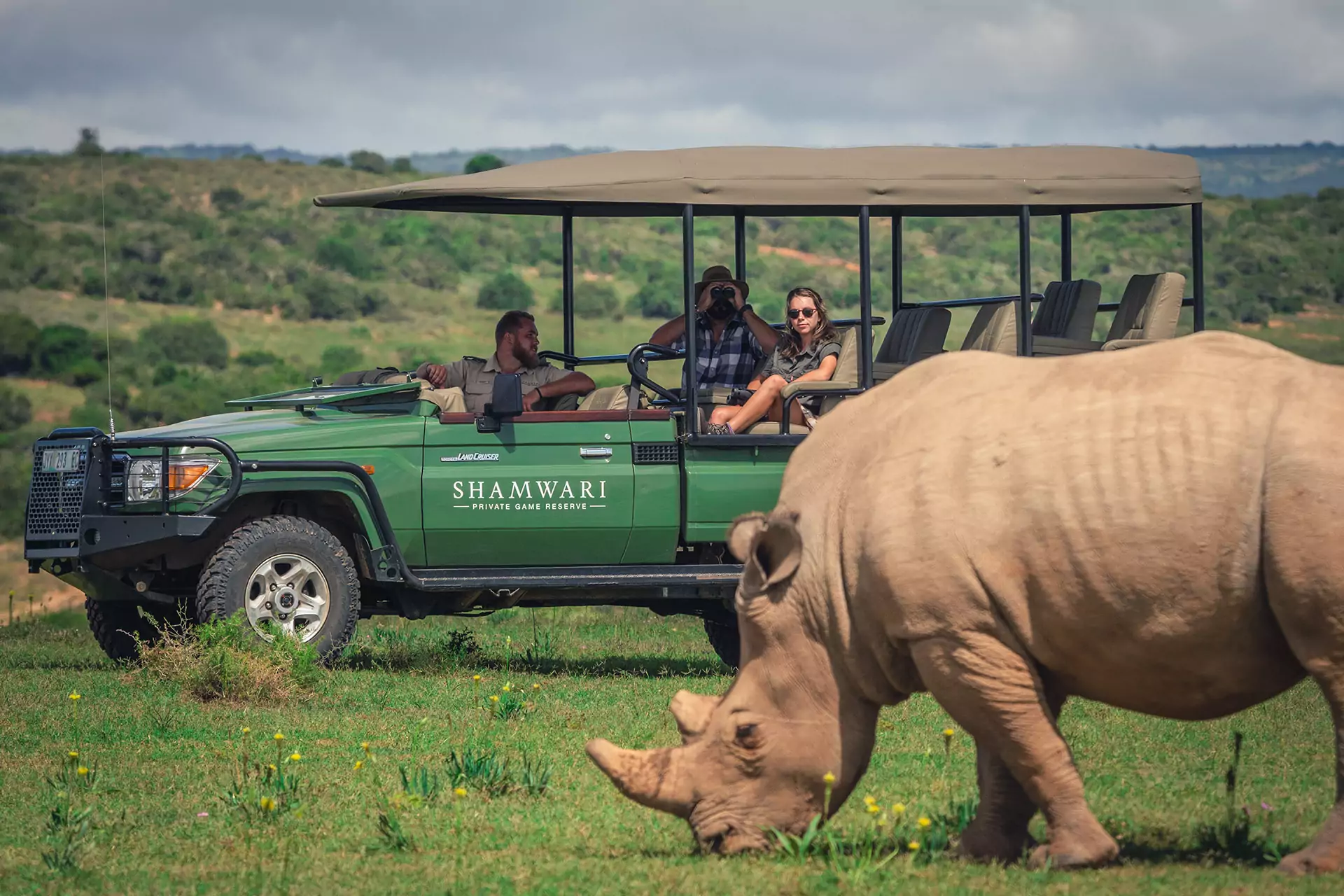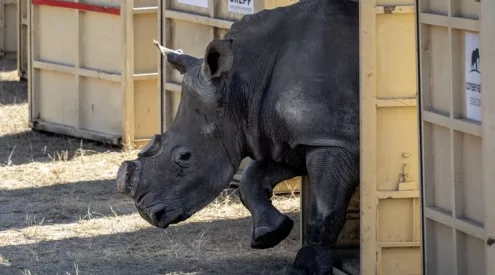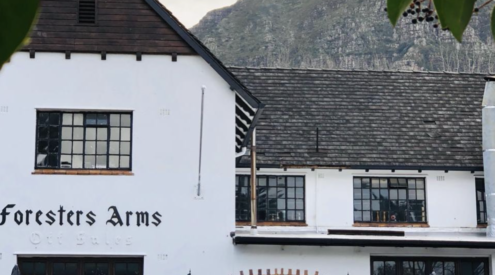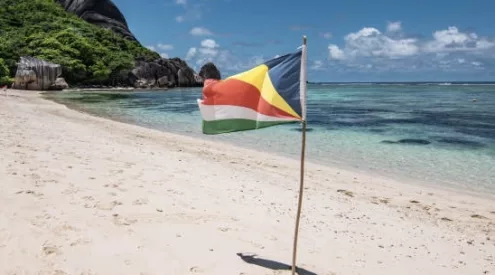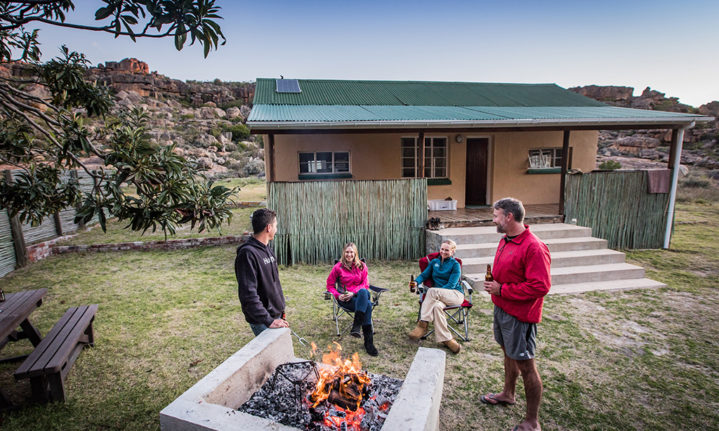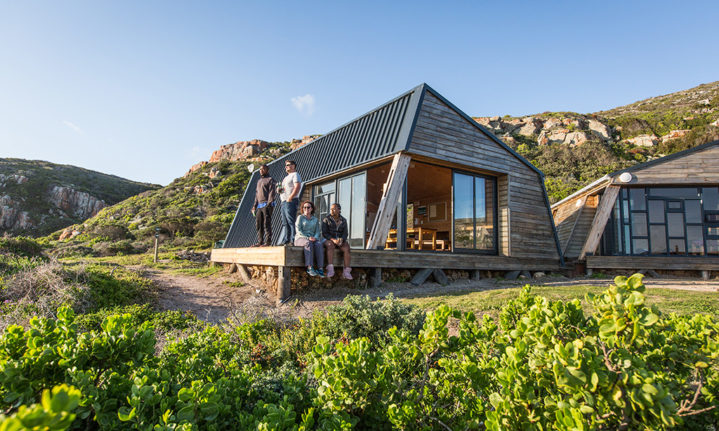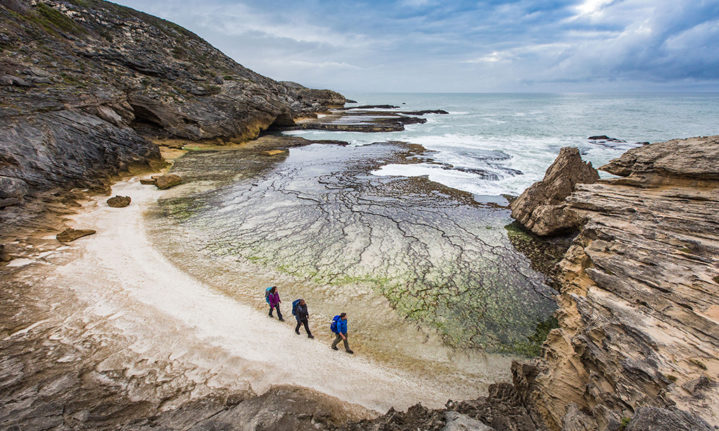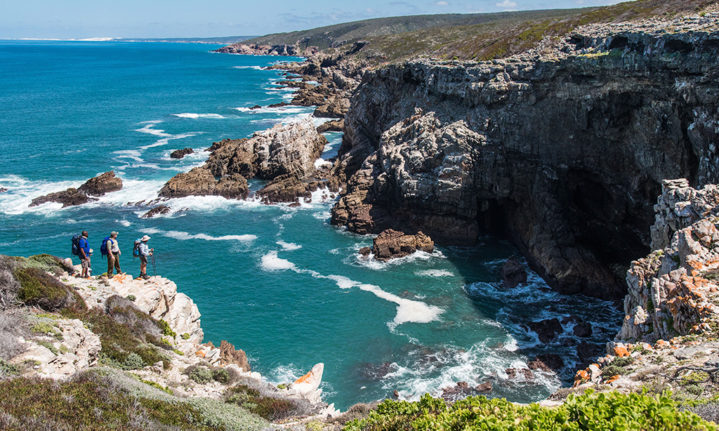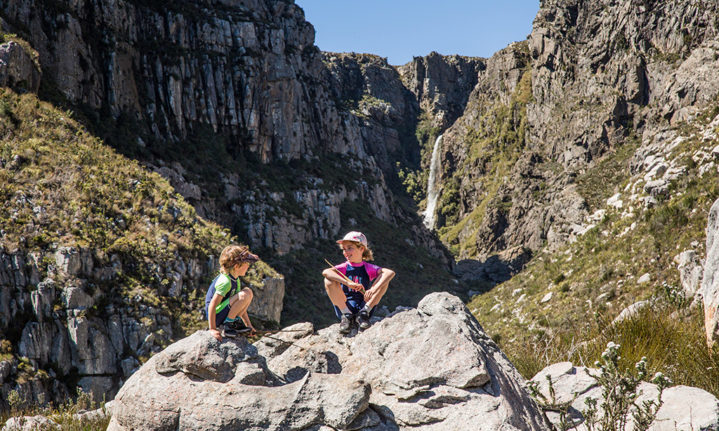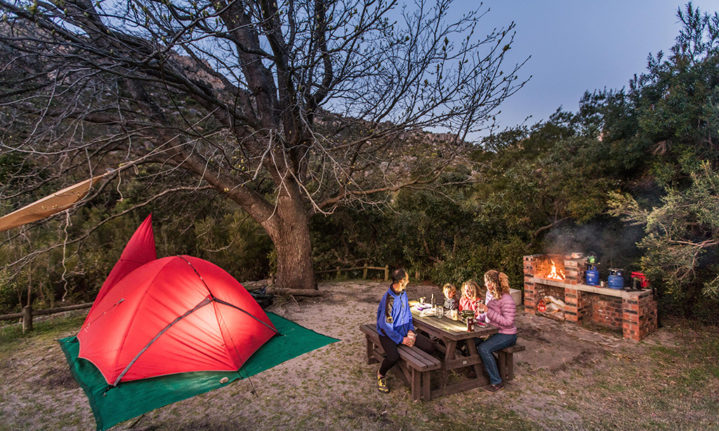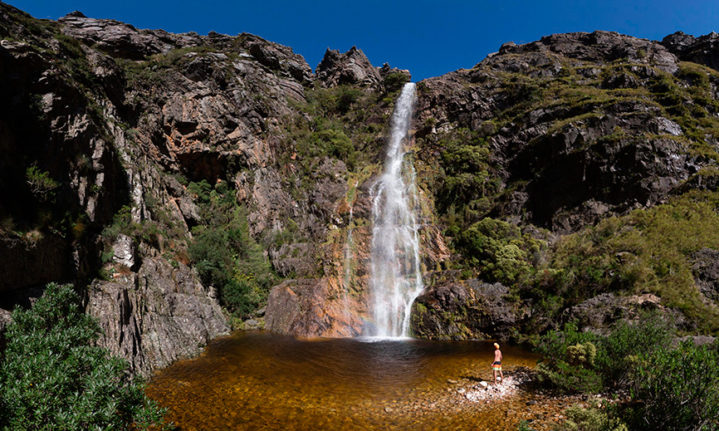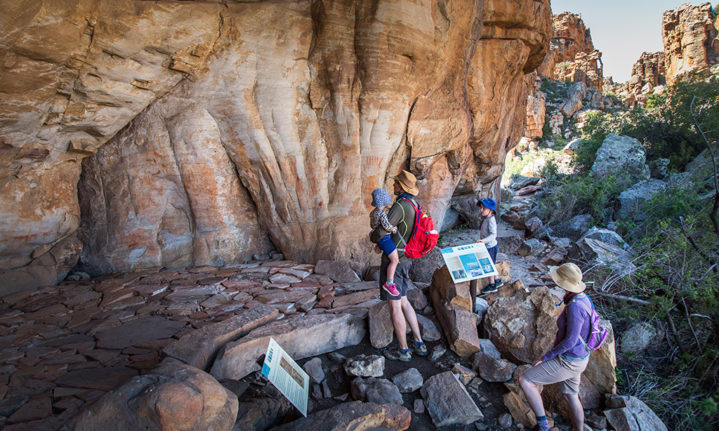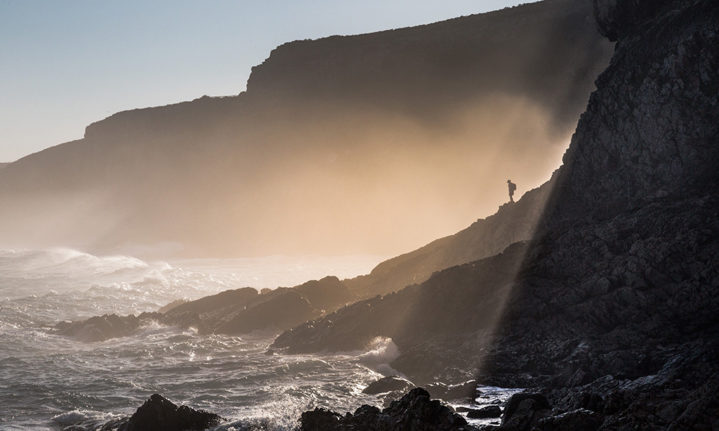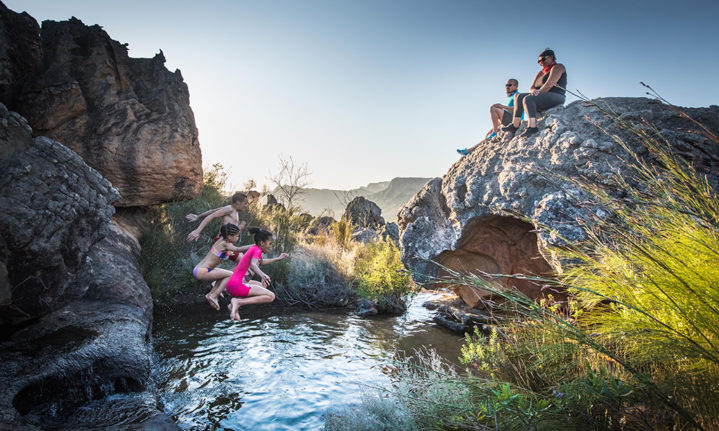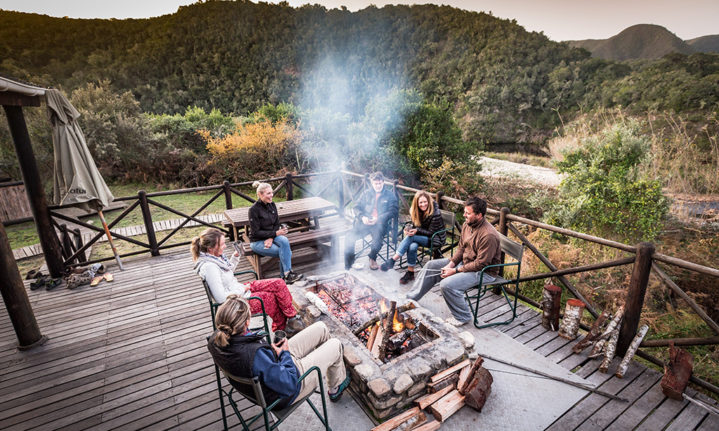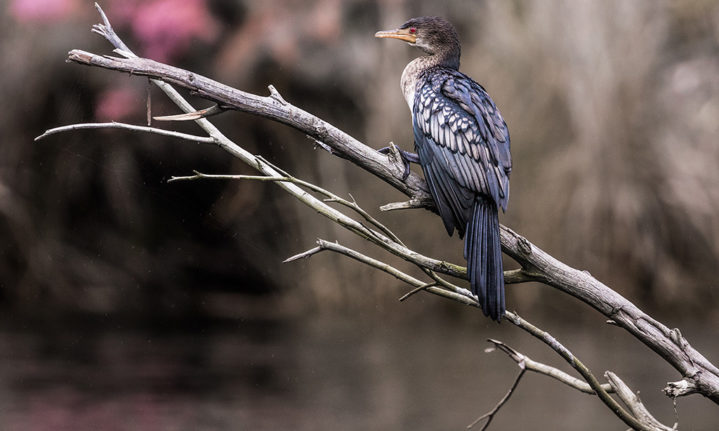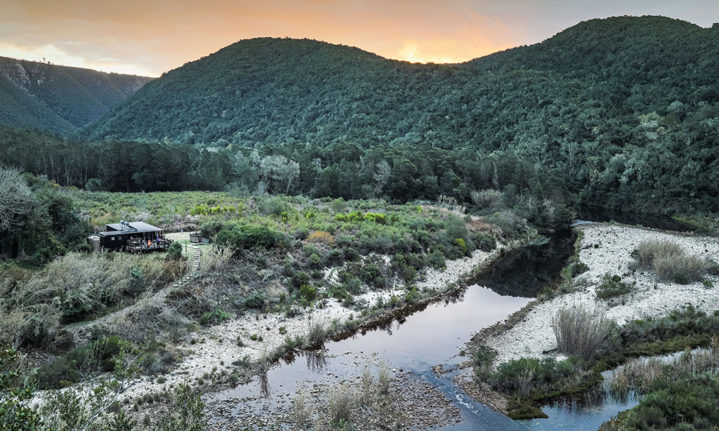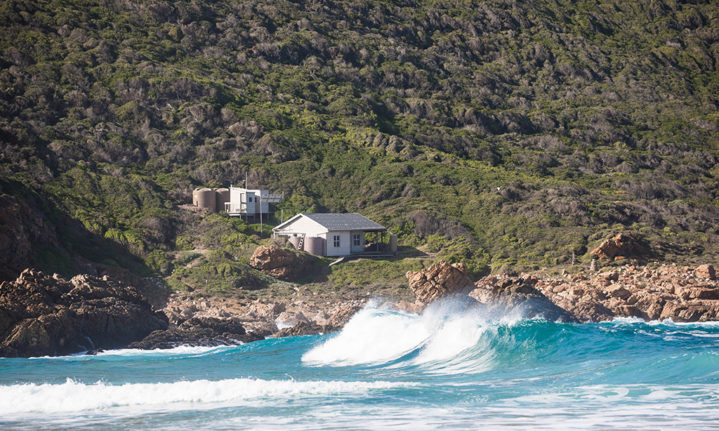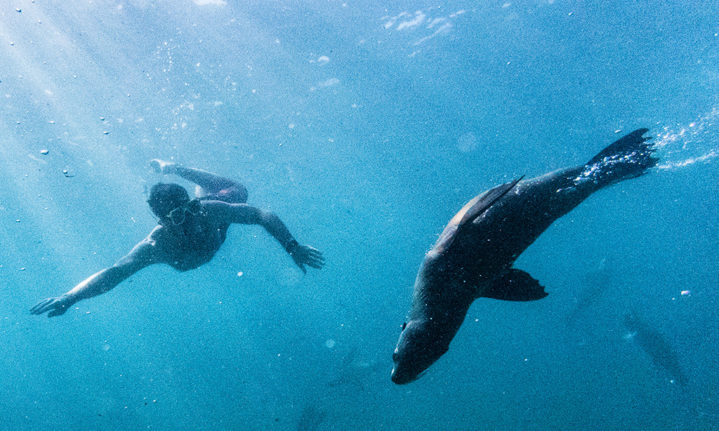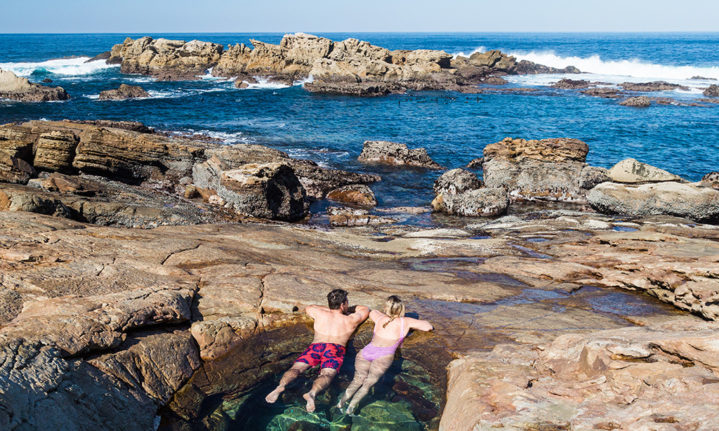Disconnect to reconnect. The Western Cape’s most beautiful nature reserves will tune your body and mind back into the restorative rhythms of Mother Nature.
Words & Photos Scott Ramsay
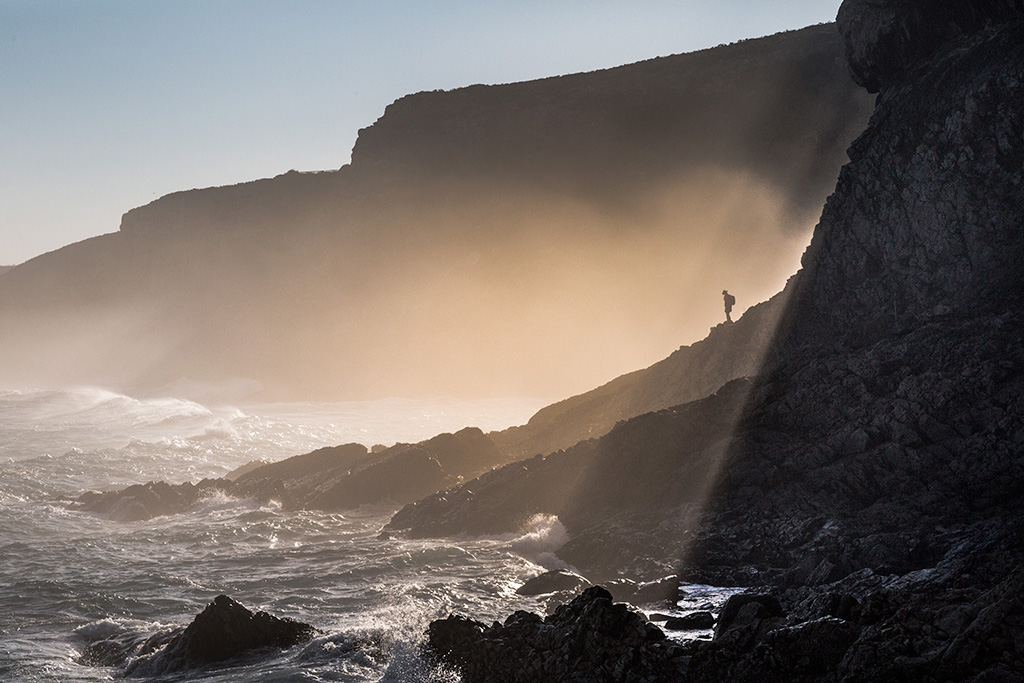
Late afternoon glow on Robberg’s southern shore – a hiker walks in the footsteps of the earliest modern humans.
Need a breath of fresh air? Then it’s time to set your mind and body free in CapeNature’s finest reserves. This government organisation is responsible for the biodiversity conservation of wilderness areas and management of 25 public nature reserves throughout the Western Cape. It’ll take you a good few years of holidays and long weekends to explore all of them so I’ve narrowed down the field to my personal favourites.
READ: Boesmanskloof: Traversing the Road to Nowhere
Snorkel with seals at Robberg and sleep over in a Strandloper cabin. Wander the Whale Trail on De Hoop’s empty coastline. Paddle up the Keurbooms River into a pristine gorge. Power up those quads to climb peaks in Limietberg and cool off in icy waterfalls. Walk the mountain paths of Cederberg, camp wild under the stars and follow the tracks back to your soul.
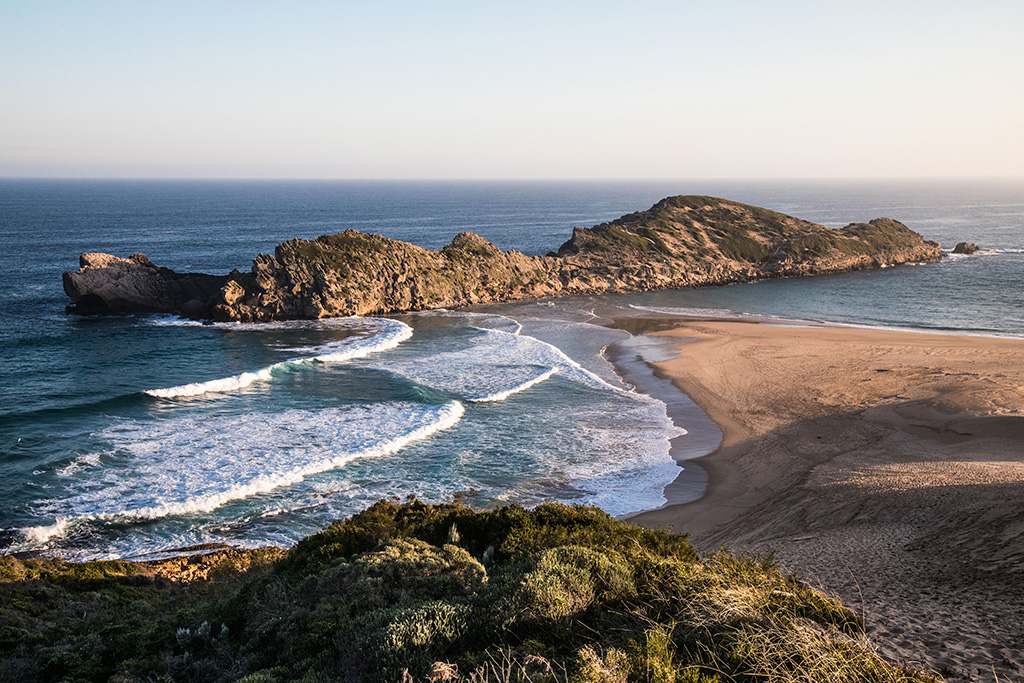
The island on Robberg’s southern shore – just a few hundred metres from Fountain Shack.
Robberg
We slip into the rock pool, and 60 Cape fur seal pups are having the biggest jol. Up, down, back and forth, they shoot around us like furry torpedoes in the clear blue water.
Some race up and peer into our masks with their bulbous eyes. I lie still, and one begins nibbling on my fins, pulling and tugging. Lost in the moment, and almost oblivious to the ocean chill, we cavort with the crazy creatures for almost an hour.
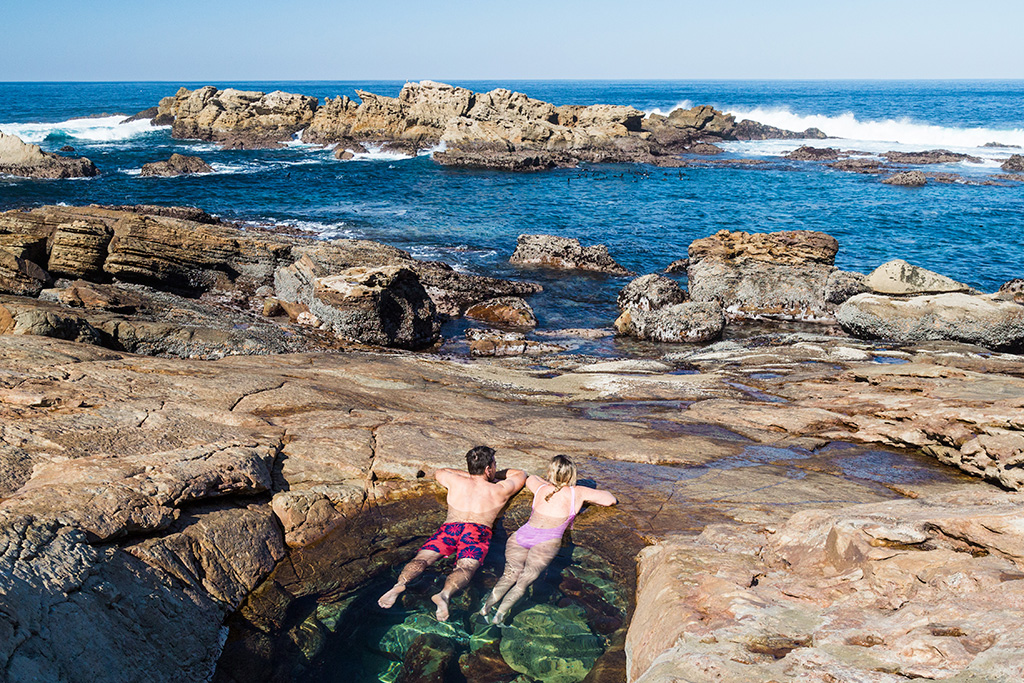
Indian Ocean swells usually pound the coastline but there are rock pools and gullies to swim in safely.
During winter, Cape fur seal pups use the shallow coves of Robberg to grow big and fat, before heading out into the open seas when they’re about nine months old.
Once plentiful, the Robberg seals were hunted to local extinction by fur traders by 1890. The species received formal protection in South Africa only in the 1990s and in 1996, the first seal pups in over a hundred years were born. Today there are about 5 000, making the reserve’s name (‘seal mountain’ in Dutch), apt once more.
Near Plettenberg Bay, Robberg is just 2km² but it’s as visually spectacular and biologically rich as many larger reserves. There are no roads in the reserve, just hiking paths, so while much of the southern Cape is overdeveloped, this sliver of paradise remains largely as it’s always been.
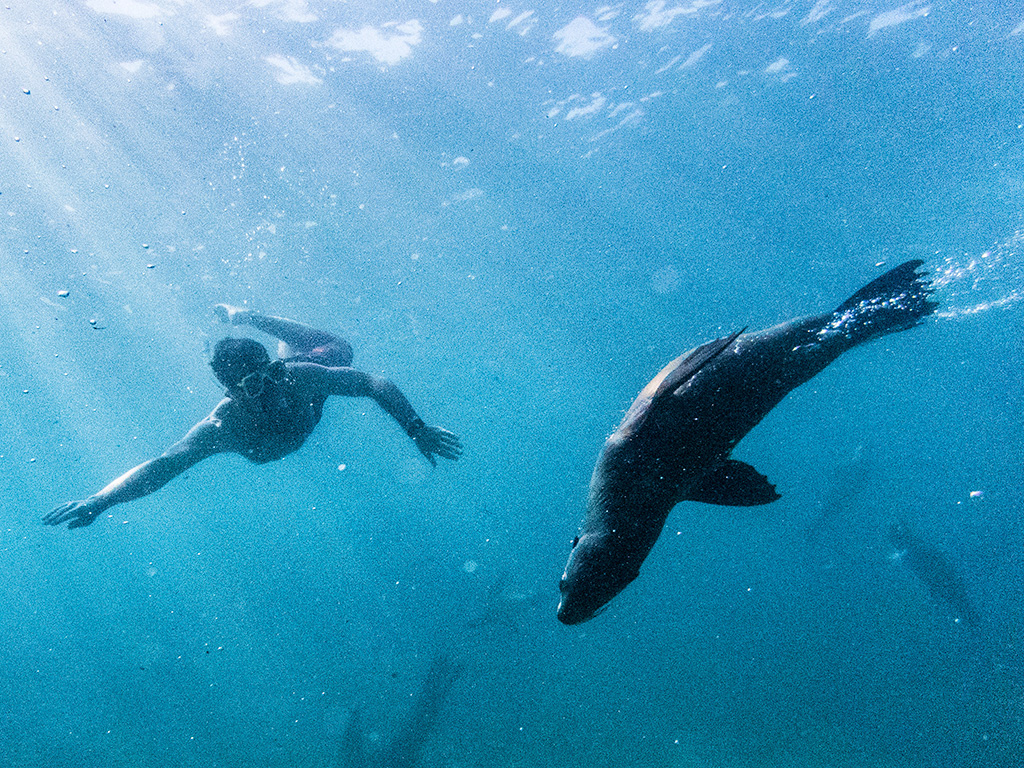
Seal fun: snorkel with pups in the ocean gullies where it’s too shallow for sharks!
Robberg is one of the best spots to watch marine wildlife in Africa. The rocky sandstone peninsula is about 4km long and almost entirely surrounded by the Indian Ocean, much of which is a marine protected area, important not only for seals but also humpback, Bryde’s and southern right whales, and ahem, great white sharks.
Stay Here
Fountain Shack, on the southern side of Robberg, is a cabin equipped for self-catering (kitchen, braai, bunk beds, mattresses, toilet, hot shower). Only accessible by a 45-minute hike from the entrance gate, so visitors need to carry in all food, drinks and firewood. Maximum eight people, R960 per night for four, R150 per extra person.
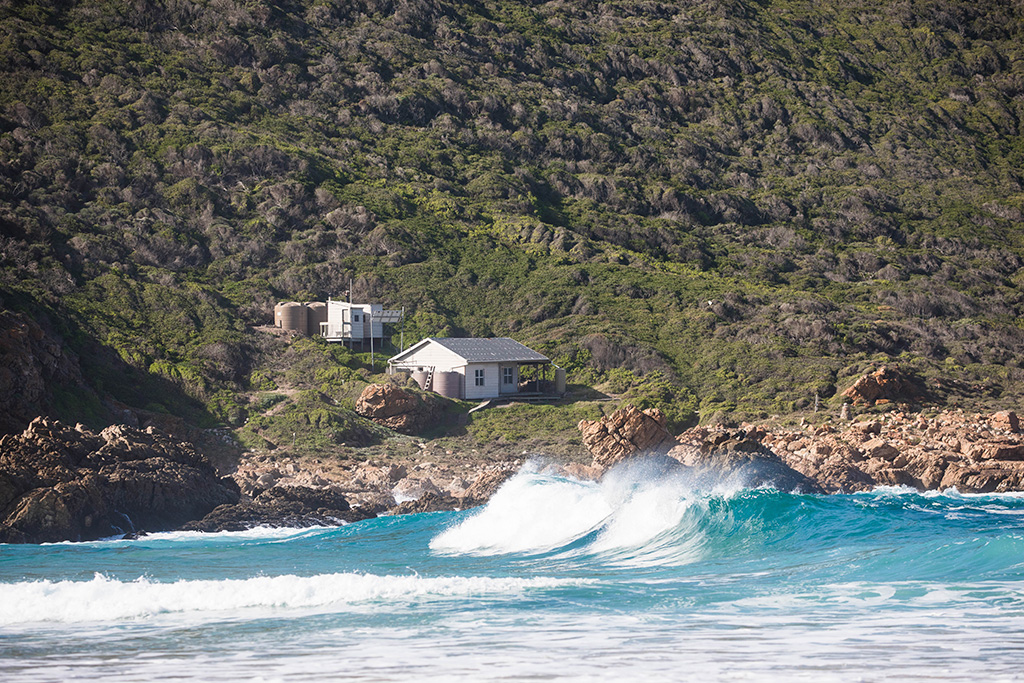
Fountain Shack, Robberg
Conservation Fact
Anatomically modern humans have lived on this coastline for much of the past 120 000 years. Several sites on Robberg have been studied by archaeologists. Check out Nelson’s Cave on the northern side of the peninsula where a simple but informative display explains the human history of the region.

Insider Tip
Nature guide and photographer Ian Pletzer lives in Plettenberg Bay. ‘The best place to view marine wildlife is from the cliffs on the northern side of Robberg. Remember your binos, and if you’re a photographer, use a polariser filter for photos of seals, sharks and whales in the water.’ Contact Ian on 060 521 8737 for a guided tour, including birding and seal snorkelling. R1 000 per half-day, maximum six people.
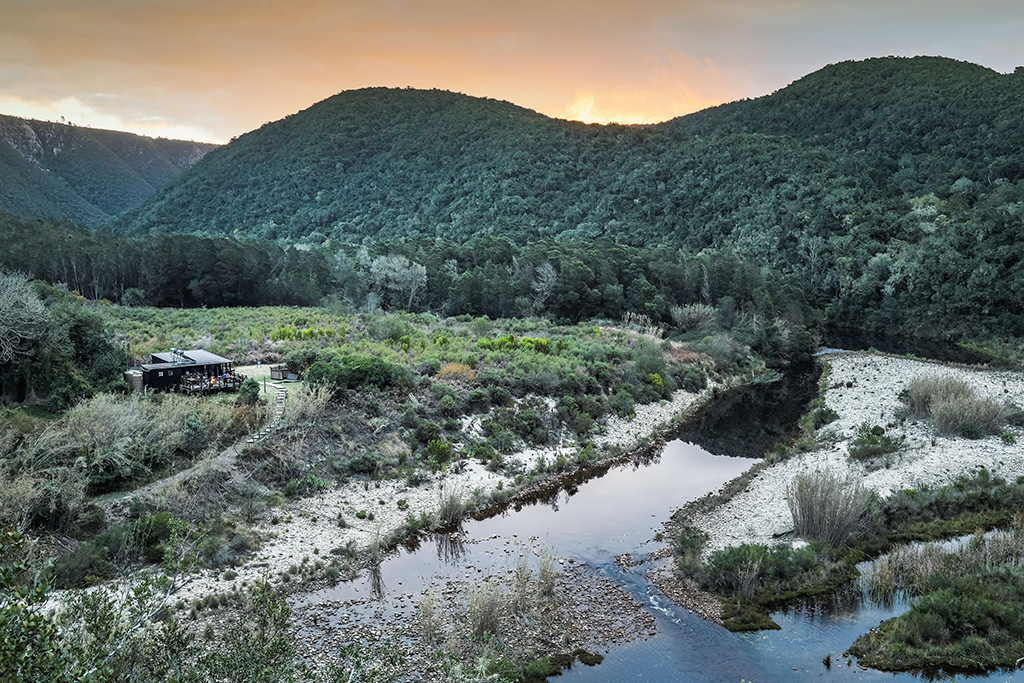
Whiskey Creek Cabin – a formula for chillation: river gorge, privacy, wood smoke, a braai and friends.
Keurbooms
A heavy morning mist hangs low over the Keurbooms River gorge. We leave the noisy N2 behind us, paddling our canoes upriver towards our destination, Whisky Creek Cabin.
This river is deep and dark, flowing from the mountains north of Plettenberg Bay into the Indian Ocean. My paddle dips into the inky water and for the first time in a while, I can hear myself breathing.
We lose cell reception, escaping WhatsApp and Instagram. Soon enough, however, we pick up another signal, the original connection with the breathing, living planet.
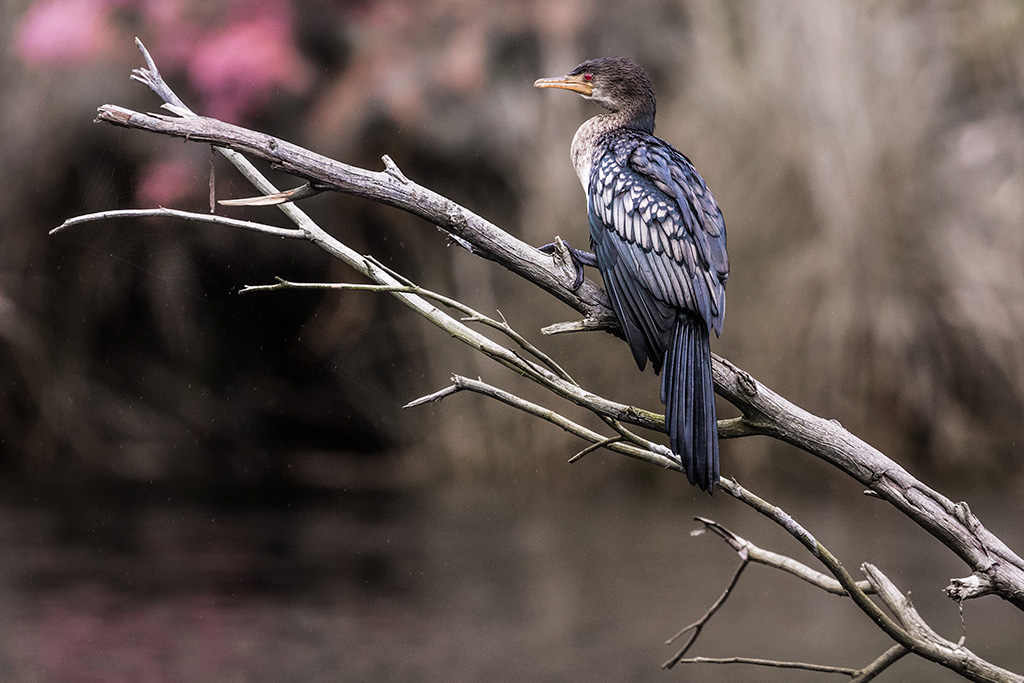
Reed cormorant, gatekeeper to the Keurbooms River.
The sun breaks through and spotlights ancient yellowwood trees, standing tall on the river banks like unshaven, wrinkly grandfathers covered in old-man’s beard.
Knysna turacos (loeries) fly sorties through the riparian forest, bright crimson flashes on a dappled emerald canvas. Otter tracks decorate the sandy river banks.
Fleetingly we see bush pigs in the undergrowth but they scuttle away. Nature turns up the volume when fish eagles let rip with their clarion calls. Goosebumps cover my body. It feels oh-so-good.
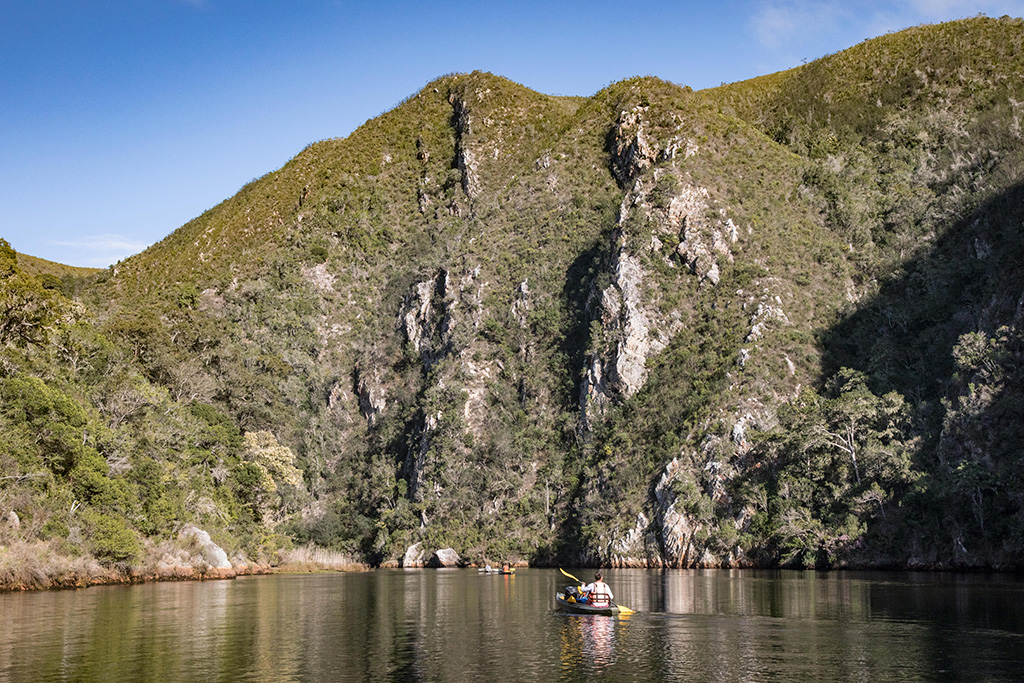
Keurbooms River Gorge is one of the last unpolluted waterways in the country.
Whiskey Creek Cabin is 7km upstream from the Keurbooms mouth. Isolated in a deep gorge, this simple cabin is the perfect place to do nothing… but experience everything.
The sun dips behind the mountains. We make a fire, crack a cold beer, and watch as a rising moon shows off. After dinner we lie on mattresses near the glowing embers, gazing up at a billion stars. Beat that, Netflix!
Stay Here
Whiskey Creek, a 90-minute paddle upstream from the N2 bridge, is a large wooden cabin and the only place to stay in Keurbooms Nature Reserve. It’s equipped for self-catering, with hot showers, a toilet and bunk beds. A braai deck looks over the river and gorge. Pick up canoes at CapeNature offices at the eastern end of the bridge. Max 10 people, from R1 470 for six people, R230 per extra person.
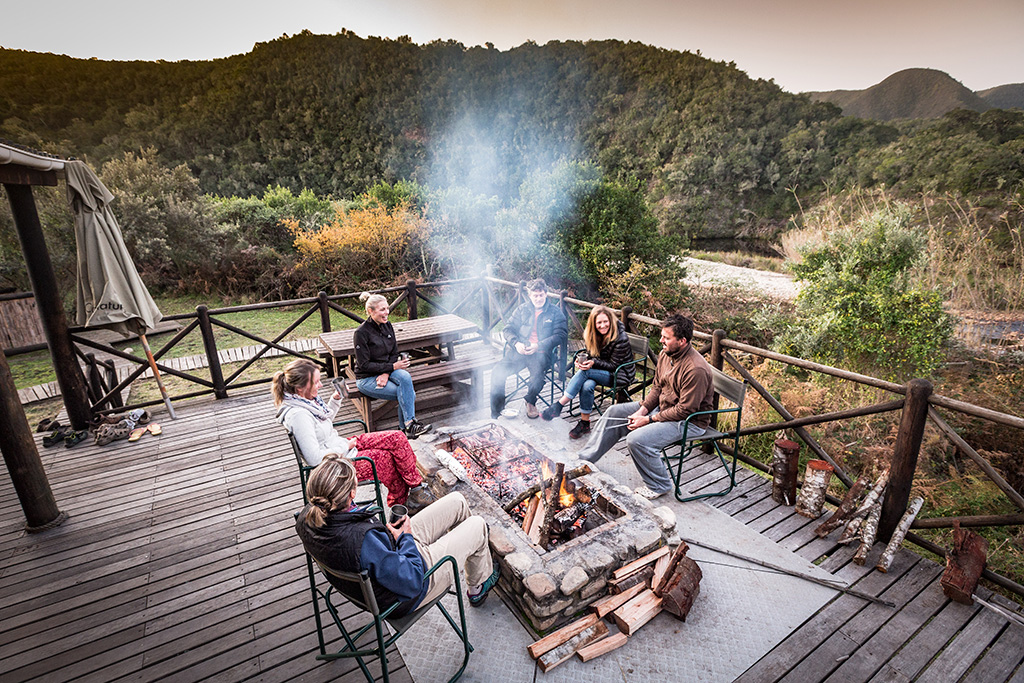
Whiskey Creek Cabin
Conservation Fact
Only 15% of rivers and estuaries in South Africa are deemed in a good condition. Keurbooms is one of them. The river is a site of national conservation importance and the estuary is one of only three sites where rare Knysna seahorses survive. It’s also the main water source for Plett; the Bitou Municipality extracts over eight million litres of water per day upstream from Whiskey Creek.

Insider Tip
Henk Niewoudt is conservation manager of the reserve, and a keen naturalist. ‘Keurbooms is a great place to spot African finfoot. Look out for them in the reeds near Whiskey Creek Cabin. And keep eyes open for signs – or sounds – of leopards in the forest. This part of the southern Cape has a decent number of them.’
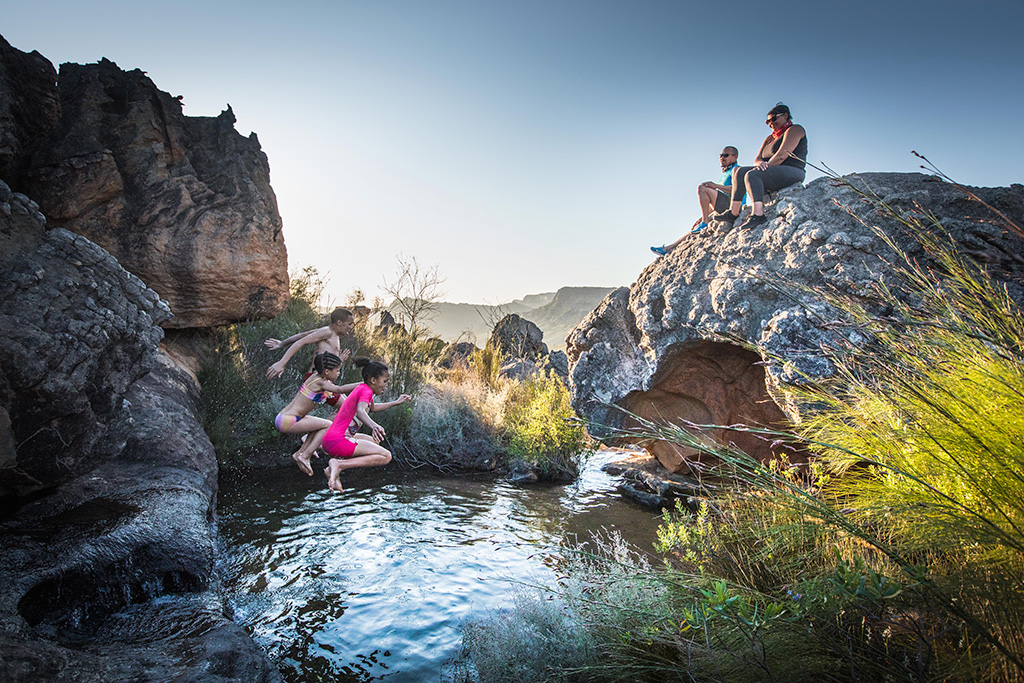
Sweltering summer days and icy cold rock pools – this fun jump is near Kliphuis campsite.
Cederberg (and Matjiesrivier)
When the first uitlanders pitched up in Southern Africa, perhaps the Bushmen saw what was coming and retreated into the mountains. The Cederberg still feels like that: a refuge from the grasping tentacles of so-called ‘civilisation’.
But where do you go in this labyrinthine mountain wilderness, full of nooks, crannies, peaks and valleys?
It’s one of the few nature reserves in South Africa where you can still sleep out under the stars, wherever you want (with a permit). Everyone should get to the Wolfberg Arch, the Maltese Cross and Sneeuberg. These are top of the list for adventurous selfie photos.
But if you like your Cederberg wilderness done raw (with fewer people), then head to the north, near Pakhuis Pass. The Kliphuis cottages and campsite make a good base from which to explore the northern Cederberg.
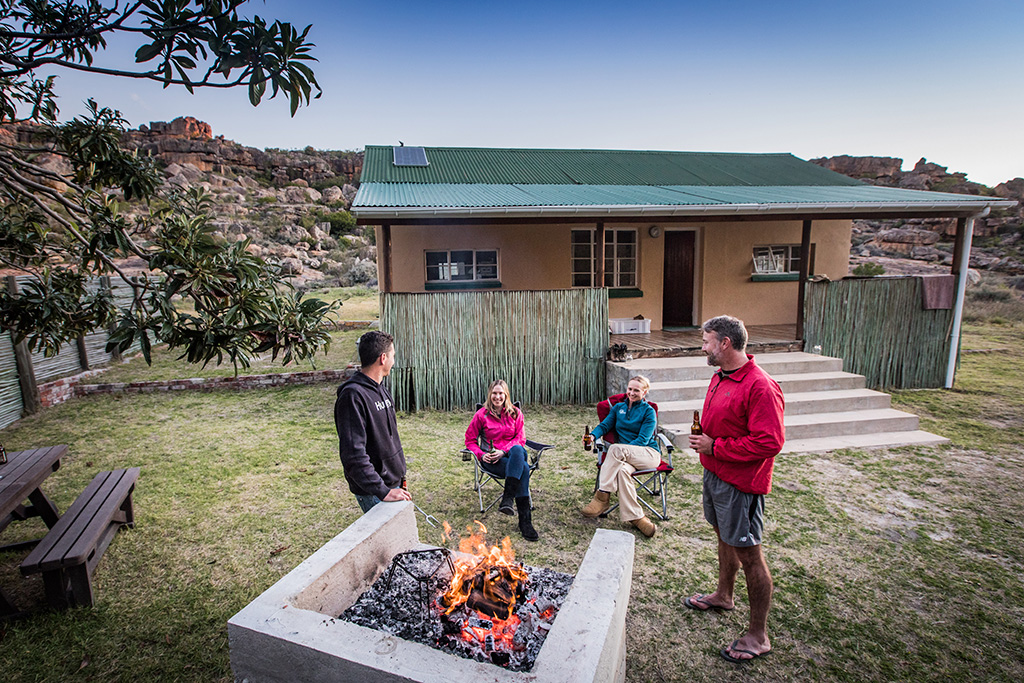
The cottage at Kliphuis Campsite, Pakhuis Pass
The sandstone rock formations here are known as Rocklands, now a world-famous bouldering site. On weekends, climbers cling mightily onto the boulders like honorary rock agamas.
The Cederberg has hundreds of thousands of rock-art paintings, most between 2 000 – 5 000 years old. The easiest place to see them is at Stadsaal Caves and Truitjieskraal in Matjiesrivier Reserve, which is really part of the central Cederberg (but for some reason has a different name).
Walking around Truitjieskraal, in particular, is a bit like walking through the Louvre in Paris – except you’re in the middle of a largely pristine mountain wilderness that also happens to be one of the most ecologically diverse places on Earth, with thousands of fynbos species.
Stay Here
The Kliphuis cottages and sites cost from R840 per night for four people (max eight people, R140 per extra person) and camping sites cost from R120 per site for two people (max six people, R20 per extra person).
Driehoek Farm at the base of Tafelberg is the most beautiful, and personal, of the private accommodations. Owners Dawie and Lizette Burger know these mountains better than most and will happily help you plan your adventure. Camping from R390 for six people, and cottages from R580 for two people. 027 482 2828, email [email protected].
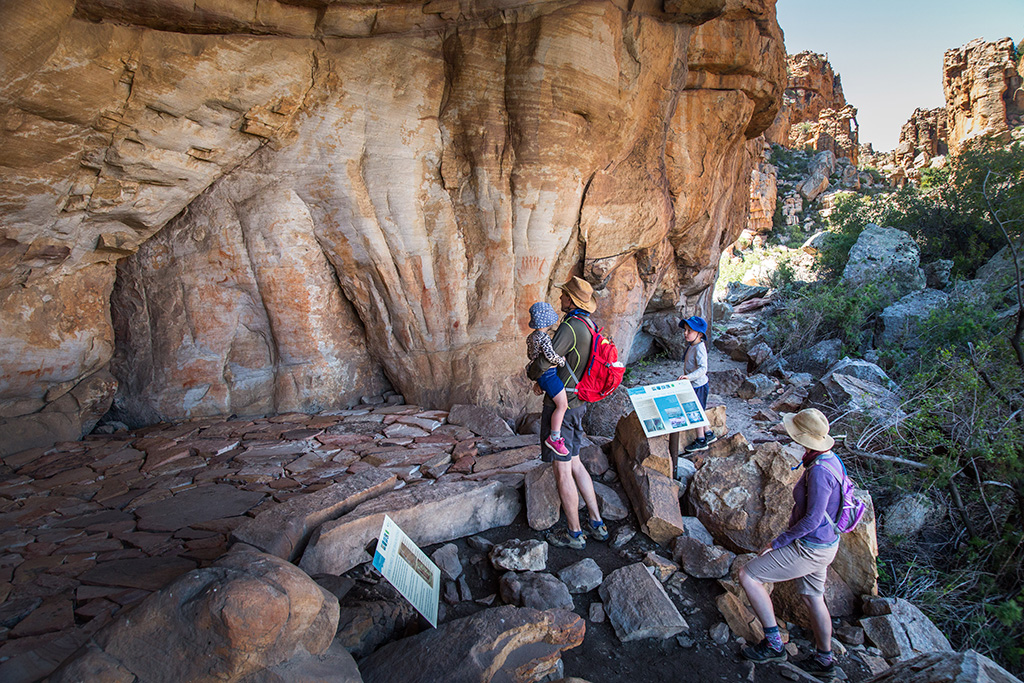
Rock paintings at Truitjieskraal are easily accessible.
Conservation Fact
The Cederberg possibly has more rock paintings per square kilometre than any other place in Africa. The most commonly painted large animal in the Drakensberg is the eland but in the Cederberg, the elephant is number one. Colonial records show that elephants still existed in the nearby Olifants River valley in the 1700s, before they were shot out.

Insider Tip
Field ranger in northern Cederberg, Jona Zimri descends from a long line of tough mountain men. His father John made many of the hiking trails and discovered hundreds of rock art paintings. ‘Make sure to do the 13km Pakhuisberg day walk. Some of the best views in the Cederberg and few people do it. There are two beautiful waterfalls on the way, and it’s not that strenuous.’
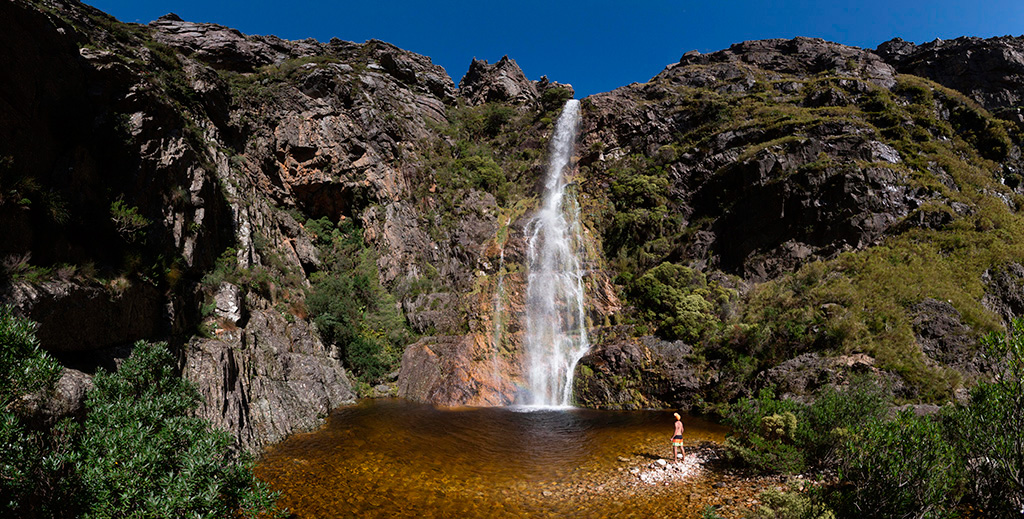
This awaits hikers at the top of the Bobbejaanskloof trail.
Limietberg
Drive from Cape Town on the N1, past Paarl, through Du Toits Kloof tunnel, and when you emerge on the other side, the mountains are so steep they seem to wobble in the wind.
The Drakensberg may be the highest mountain range in South Africa but close-up these southern peaks seem just as impressive. This is Limietberg Nature Reserve, a vast protected area of 1 000km² that stretches from Franschhoek all the way to Wellington.
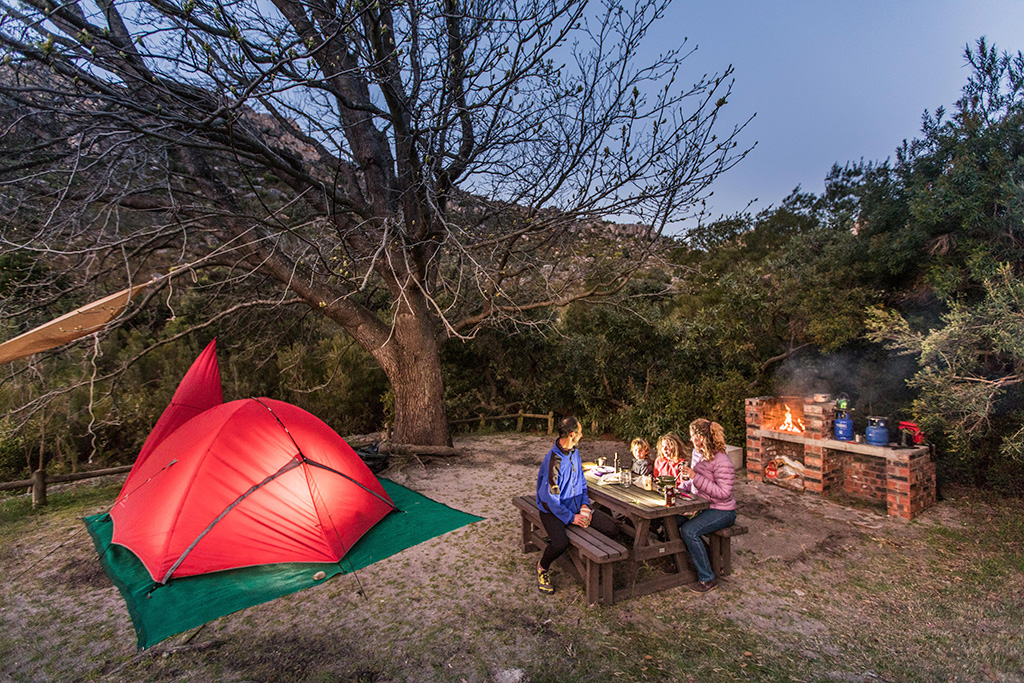
The campsites at Tweede Tol are right in the mountains
In winter, heavy snowfalls can bring traffic to a standstill, and precipitous cliff faces are drenched by thunderous waterfalls. In the dry, searing summers, the rivers keep flowing. The Limietberg is the main watershed for the Breede and Berg Rivers that supply much of Cape Town’s water.
There are no formal entrances or exits to sprawling Limietberg. The easiest and most popular way to experience this rugged reserve is the 26km Bain’s Kloof Pass, from Worcester in the east, or Wellington in the west.
Bain’s Kloof Pass itself is a road-building wonder, started in 1849 and built by cohorts of convicts. Surely those shackled prisoners must have looked up at waterfalls, and wished for a day off from stone-breaking to chill by the rock pools?
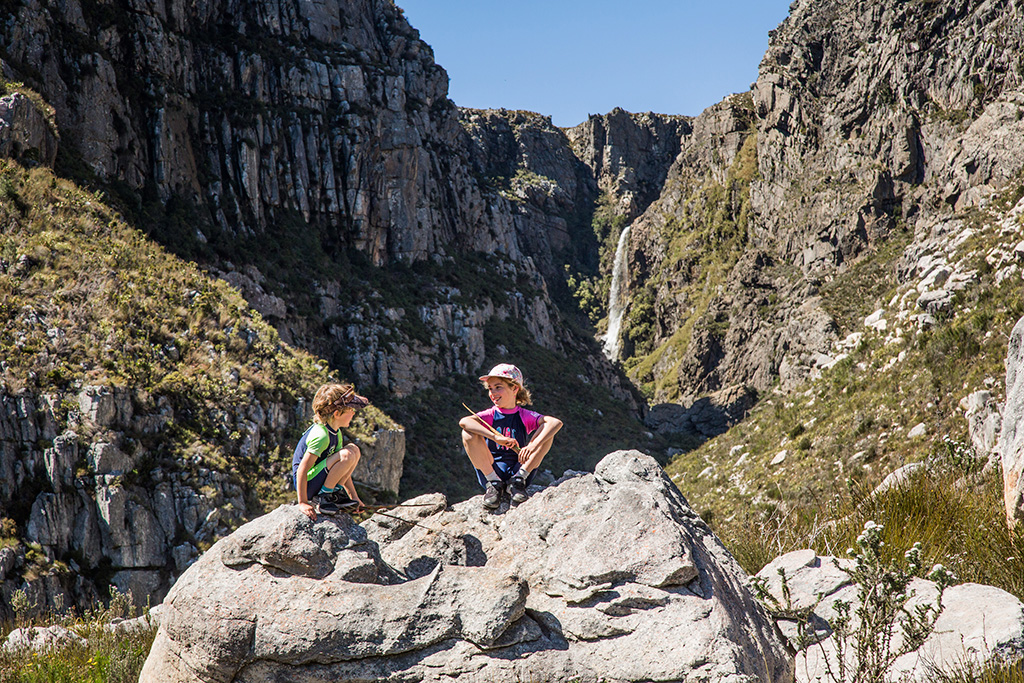
The Bobbejaanskloof hike takes about four hours return and is good for kids.
You can’t go wrong walking the 9km trail to the waterfalls at the top of Bobbejaanskloof Trail, which starts near the top of Bain’s Kloof Pass. After dropping down and up across the Witte River, the path follows a gentle upward contour, only getting a bit steep towards the top of the gorge, where the waterfalls reveal themselves spectacularly.
We spent a few hours swimming in the waterfalls’ icy rock pools, sharing the water with a few Cape river frogs. We warmed up afterwards in the sweet orange sunshine, basking like dassies. Verreaux’s eagles soared above, keeping check on their larder.
Stay Here
The spectacular Tweede Tol campsite can get noisy and congested, so visit outside long weekends and holidays. Watch out for brazen baboons which will help themselves to any food that isn’t stashed away. Max six people, from R160 per site for two, R60 per extra person.
Conservation Fact
This mountain landscape is a haven for leopard, klipspringer and honey badger, but also the endangered white-tailed mouse and the endemic Verreaux’s mouse which pollinates several protea species. In the sparkling streams you may find the tiny Cape kurper, galaxias and redfin fish, all indigenous species under serious threat from introduced trout, bass, tilapia and catfish.

Insider Tip
Local mountaineer Stephen Davis has climbed most of the peaks in the Western Cape, but Limietberg is one of his favourite places to chill. ‘Spring and autumn are the best times to visit. If you’re feeling lazy, there’s no need to go on a big mountain mission. Walk upstream from Tweede Tol, and there are several rock pools and waterfalls to swim in – perfect for kids. And the water is so clear you can drink straight from the river.’
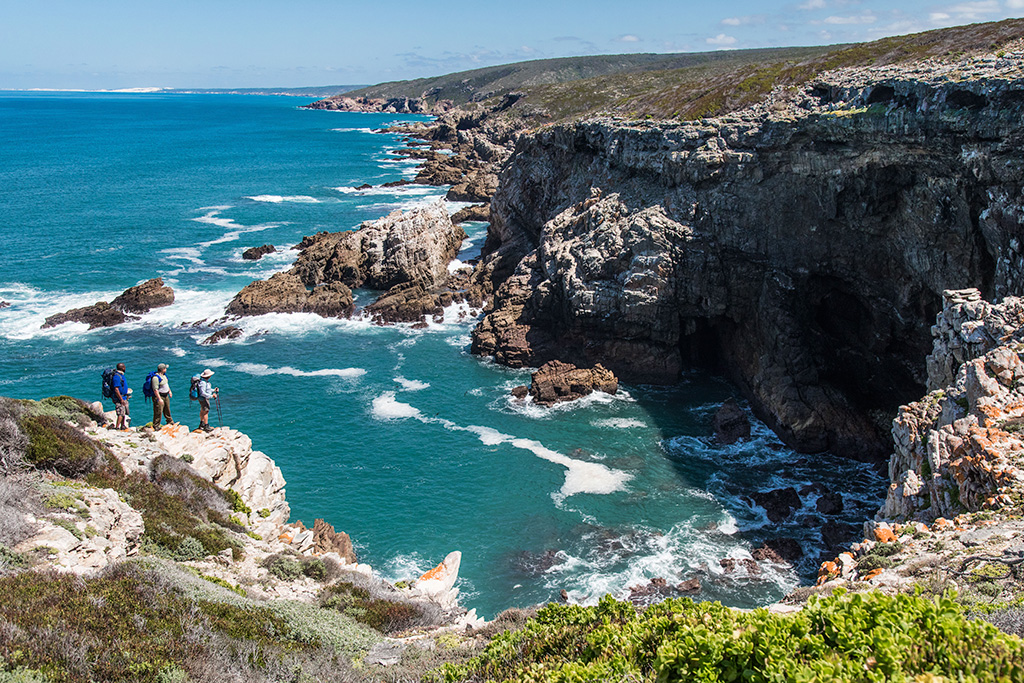
The caves on De Hoop’s coastline (Day 3 of the hike) are archaeological wonders, and show evidence of early modern humans living here.
De Hoop
The Whale Trail in De Hoop Nature Reserve is one of the most popular multi-day trails in SA. The heavily used cabins were showing wear and tear, but recently they’ve been upgraded and renovated.
The five-night trail starts at Potberg in the north of the reserve, ascending to the mountain summits with views over the Breede River and southwards to the Indian Ocean. But the magic revs up on the third day when you drop down to Noetsie cabins on the coast.
The newly built A-frame huts sit just above the shoreline, looking out over a rocky beach with a honey-coloured estuary. Caspian terns circle overhead, oystercatchers trot on the rocky shore-line. Across the beach is a huge cave, where archaeologists have found evidence of early modern humankind.
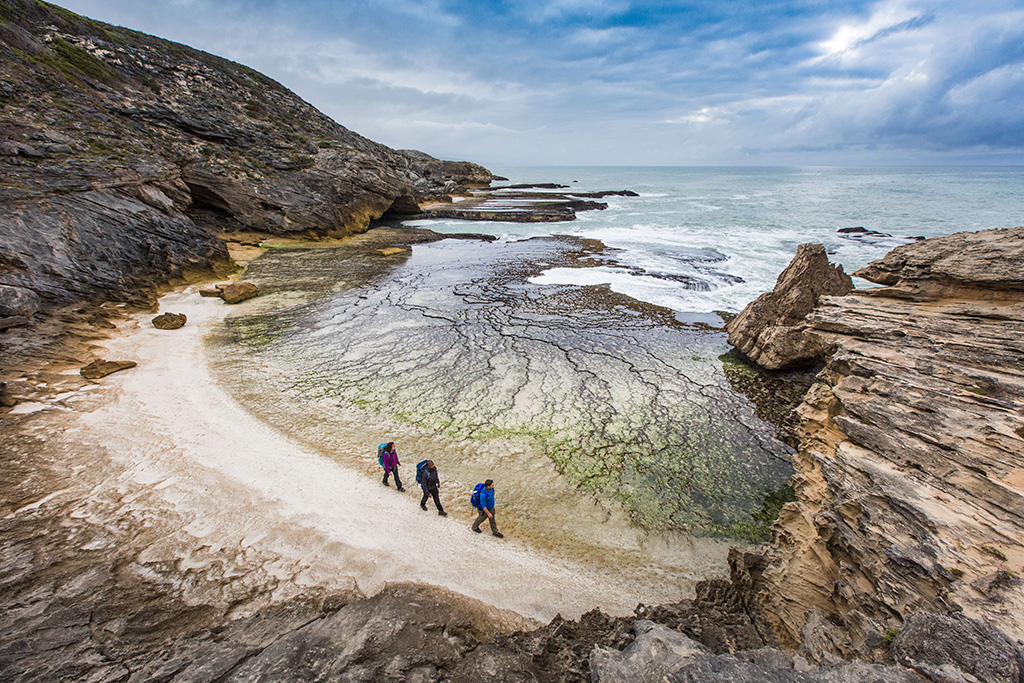
The Whale Trail skirts diverse coastlines – this one’s nearVaalkrans.
During the last glacial period about 160 000 years ago, while much of the rest of the world was dessicated or covered over by ice, this region’s climate remained relatively benign. The evidence suggests that this coastline may have been the only place in Africa where homo sapiens thrived at that time.
While other parts of ancient Africa can be exhilarating and exciting, this coastline of the southern Cape seems calming and nurturing. The climate is soft, there’s plenty of fresh water, and the ocean is rippling with schools of fish. Yes, I could be a Strandloper here!
We swam in the rock pools and looked out over the open ocean, and a few southern right whales cruised past, about 50m offshore. De Hoop is world – famous for its congregations of this whale species in spring time, when adults come to mate and moms give birth to babies in the warm waters.
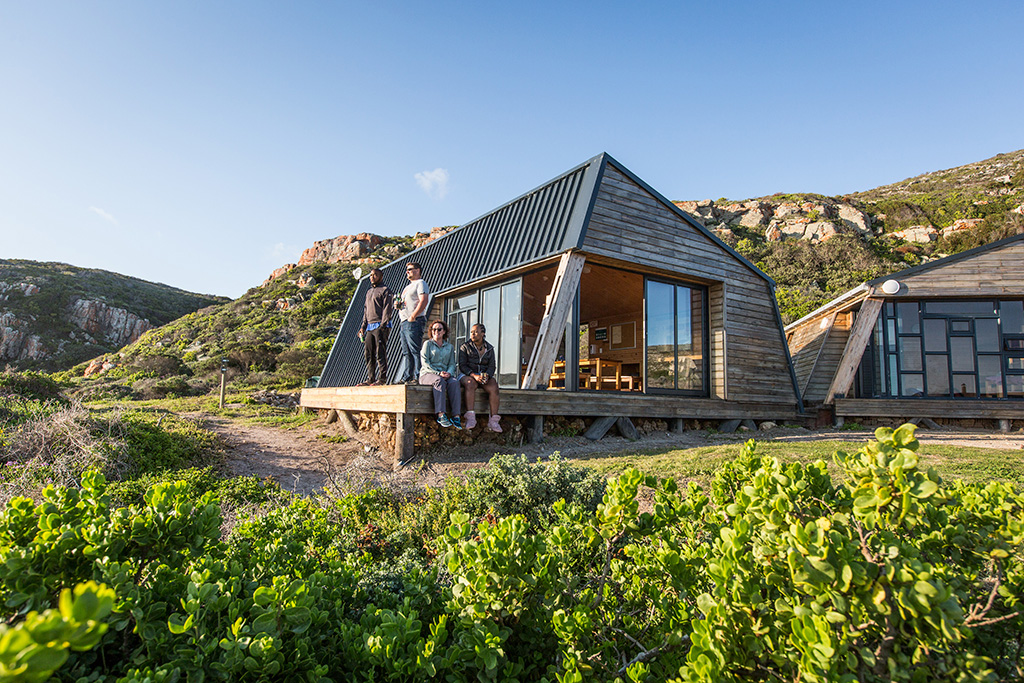
The stylish Noetsie cottages, Whale Trail
Stay Here
There are five overnight huts on the Whale Trail: Potberg, Cupidoskraal, Noetsie, Hamerkop and Vaalkrans. The first two are nice enough but set away from the ocean and surrounded by plenty of invasive gum and wattle trees. The three coastal huts are superb, and each has its own character. From R1 795 per person for the hike; bookings of six or 12 people only.
After the trail (or any other time) spend a night or two in relative luxury at De Hoop Collection in the west of the reserve. The new restaurant overlooks De Hoop vlei and is a destination in itself. From R1 500 for a rondavel for two people.
021 422 4522
dehoopcollection.com
Conservation Fact
The marine protected area (MPA) offshore of De Hoop provides a safe haven for fish to breed and spawn, repopulating overfished areas around it. But ironically, the MPA wasn’t declared to protect fish. Instead, in the 1980s, the parastatal Denel wanted to test missiles over the open ocean, so they chose this strip of Cape shoreline, turning it into a nature reserve. Fortunately, there’s no missile testing these days.
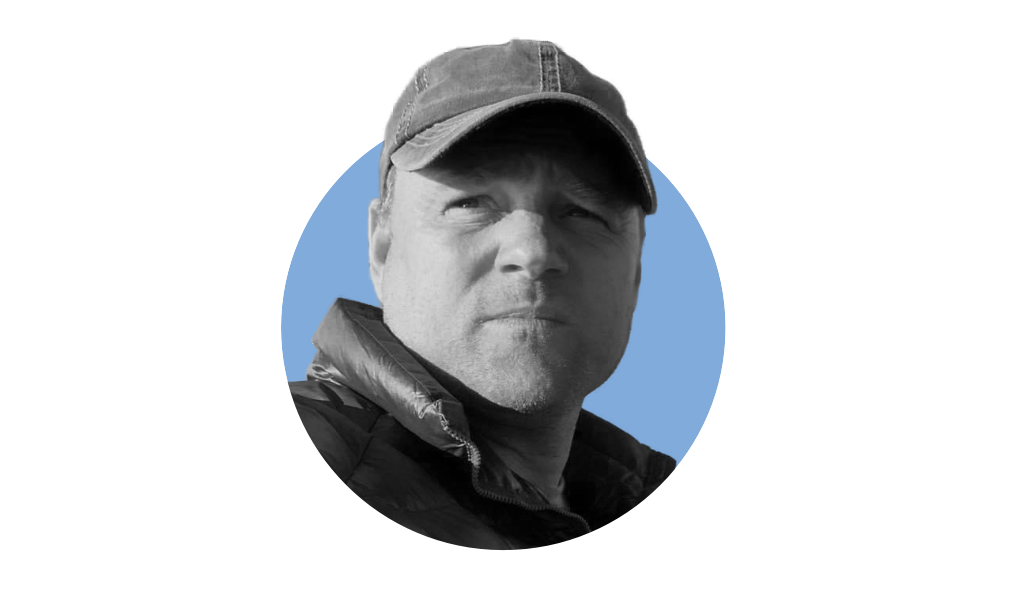
Insider Tip
Tim Lundy is the Western Cape’s hiking guru, and has walked every major trail in the province. Tim enjoys a steep path but also doesn’t mind taking it easy once in a while. ‘The Whale Trail is one of the few multi-day hikes which offers a slackpacking option, where your bags and food can be driven between huts. Carry a light day pack, and enjoy the trail without having to slog it.’

ALSO READ: Pretty fly for a cacti: why the Calitzdorp Vetplantfees is the best fest around


